The many-to-many, without the explicit mapping of the pairing table as an entity - is in NHibernate of course suported. So, in case, that the Date column is autogenerated, or nullable (does not have to be inserted by app/NHiberante), we can do it like here: 6.8. Bidirectional Associations
<class name="User">
<id name="Id" column="Uid"/>
...
<bag name="Groups" table="UGlink" lazy="true">
<key column="Uid"/>
<many-to-many class="Group" column="Gid"/>
</bag>
</class>
<class name="Group">
<id name="id" column="Gid"/>
...
<!-- inverse end -->
<bag name="Users" table="UGlink" inverse="true" lazy="true">
<key column="Gid"/>
<many-to-many class="User" column="Uid"/>
</bag>
</class>
So, what we have is a mapping, in which NHiberante does care about the pairing table, and we can do:
thisUser.Groups
But if I could suggest, do not go with many-to-many. The many-to-one with pairing object is (I'd say) better solution, because it will support searching Users by Groups and vice versa.
See Chapter 24. Best Practices, cite:
Don't use exotic association mappings.
Good usecases for a real many-to-many associations are rare. Most of the time you need additional information stored in the "link table". In this case, it is much better to use two one-to-many associations to an intermediate link class. In fact, we think that most associations are one-to-many and many-to-one, you should be careful when using any other association style and ask yourself if it is really neccessary.
Here is some more detailed explanation how to do it without many-to-many: Nhibernate: How to represent Many-To-Many relationships with One-to-Many relationships?
